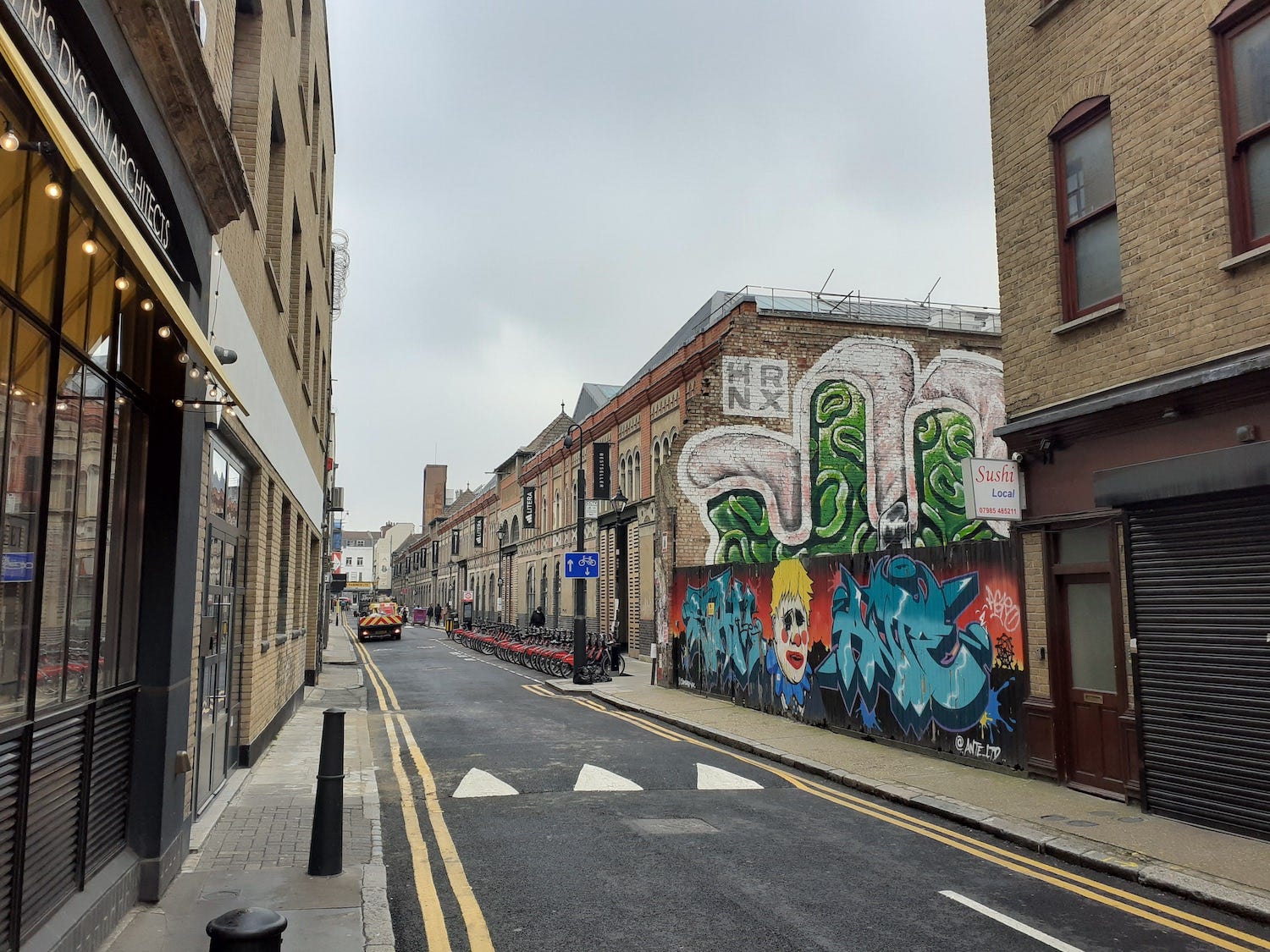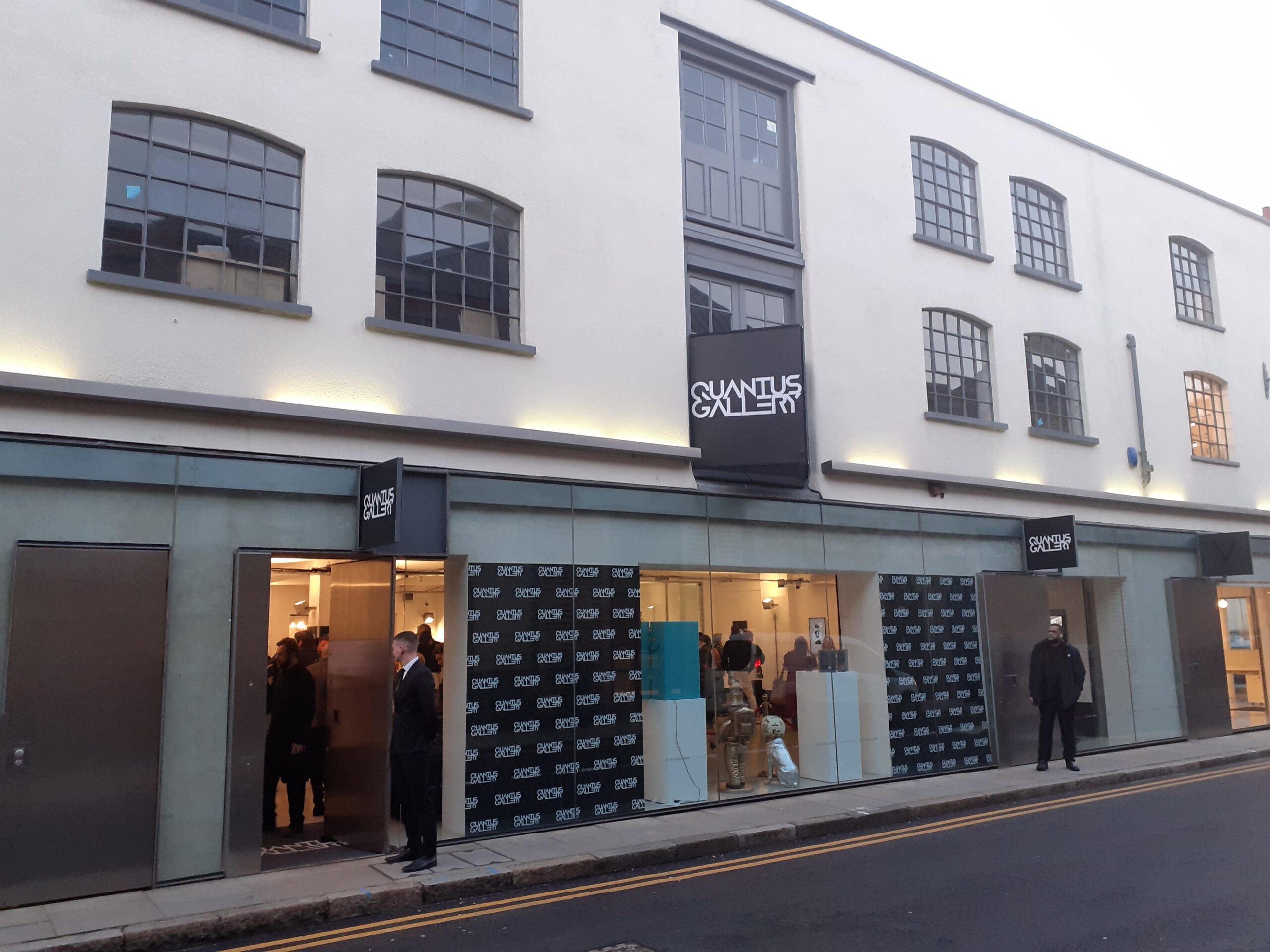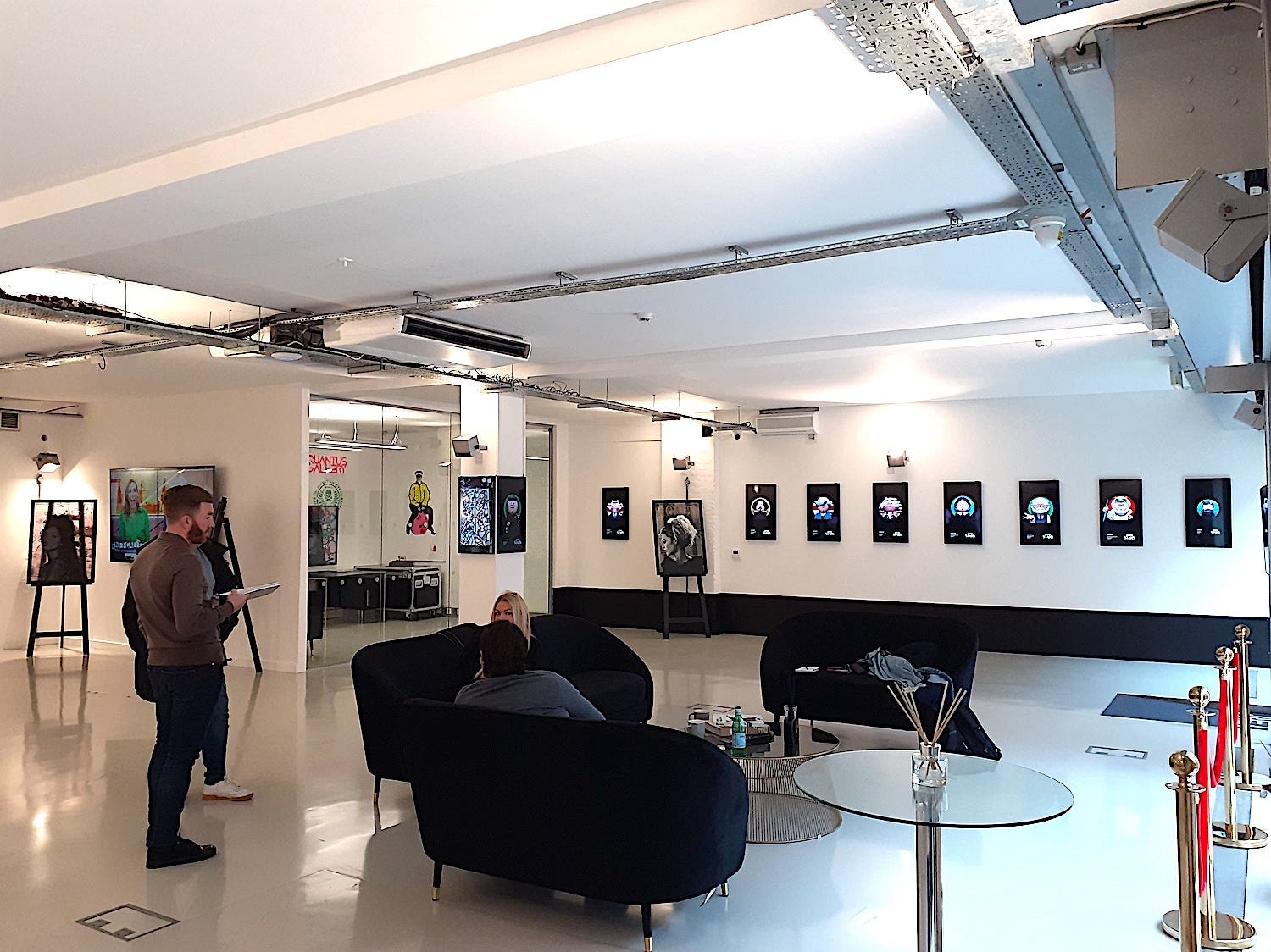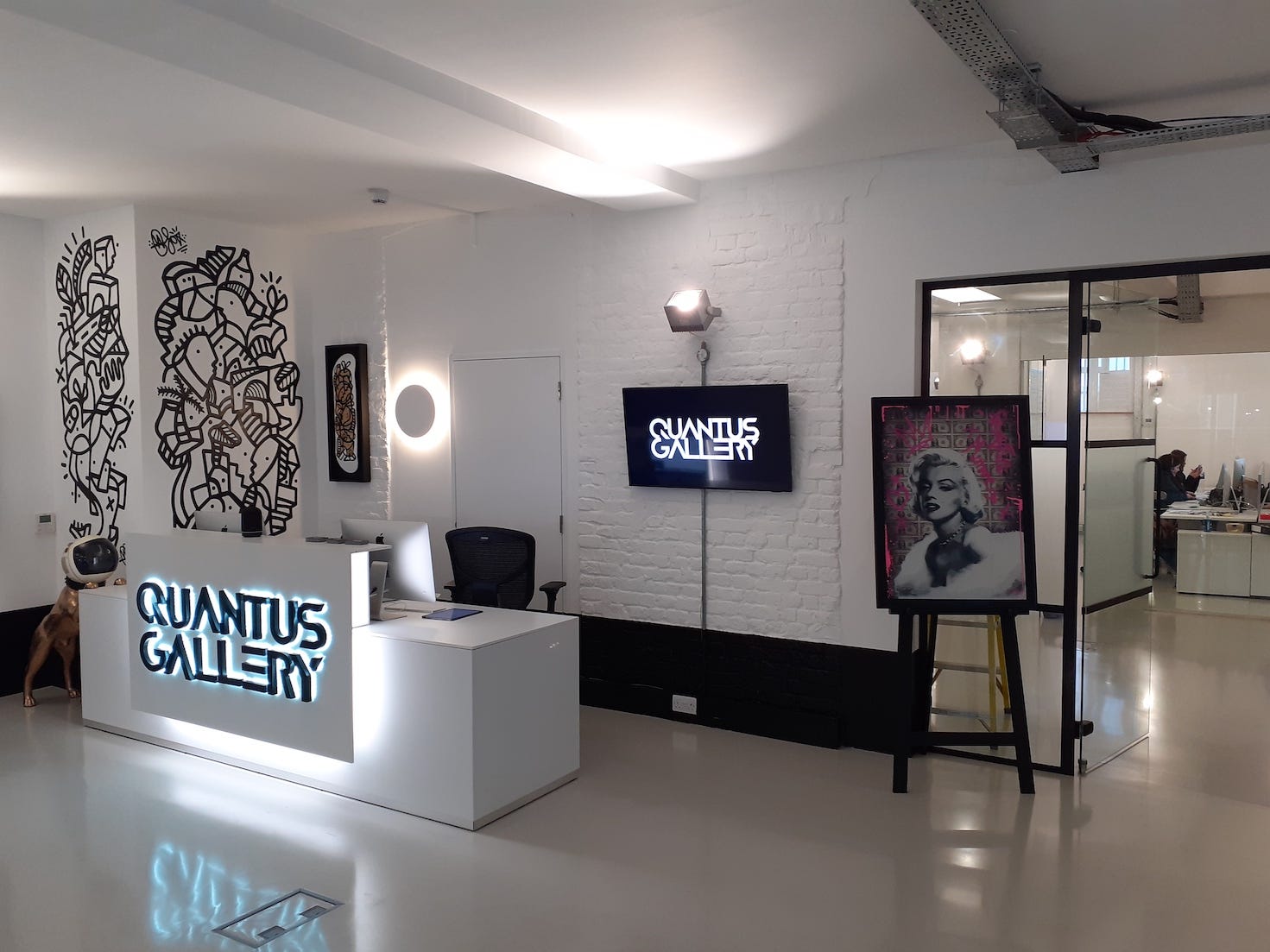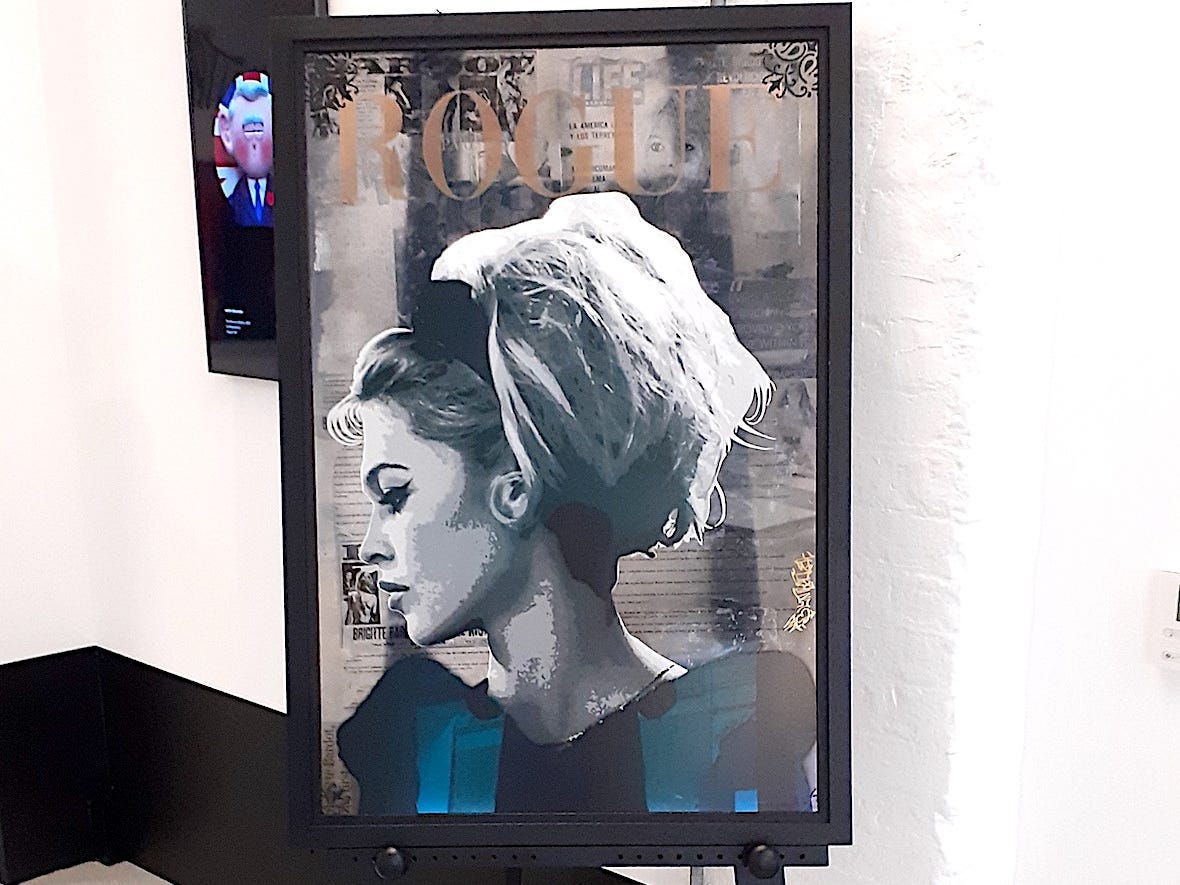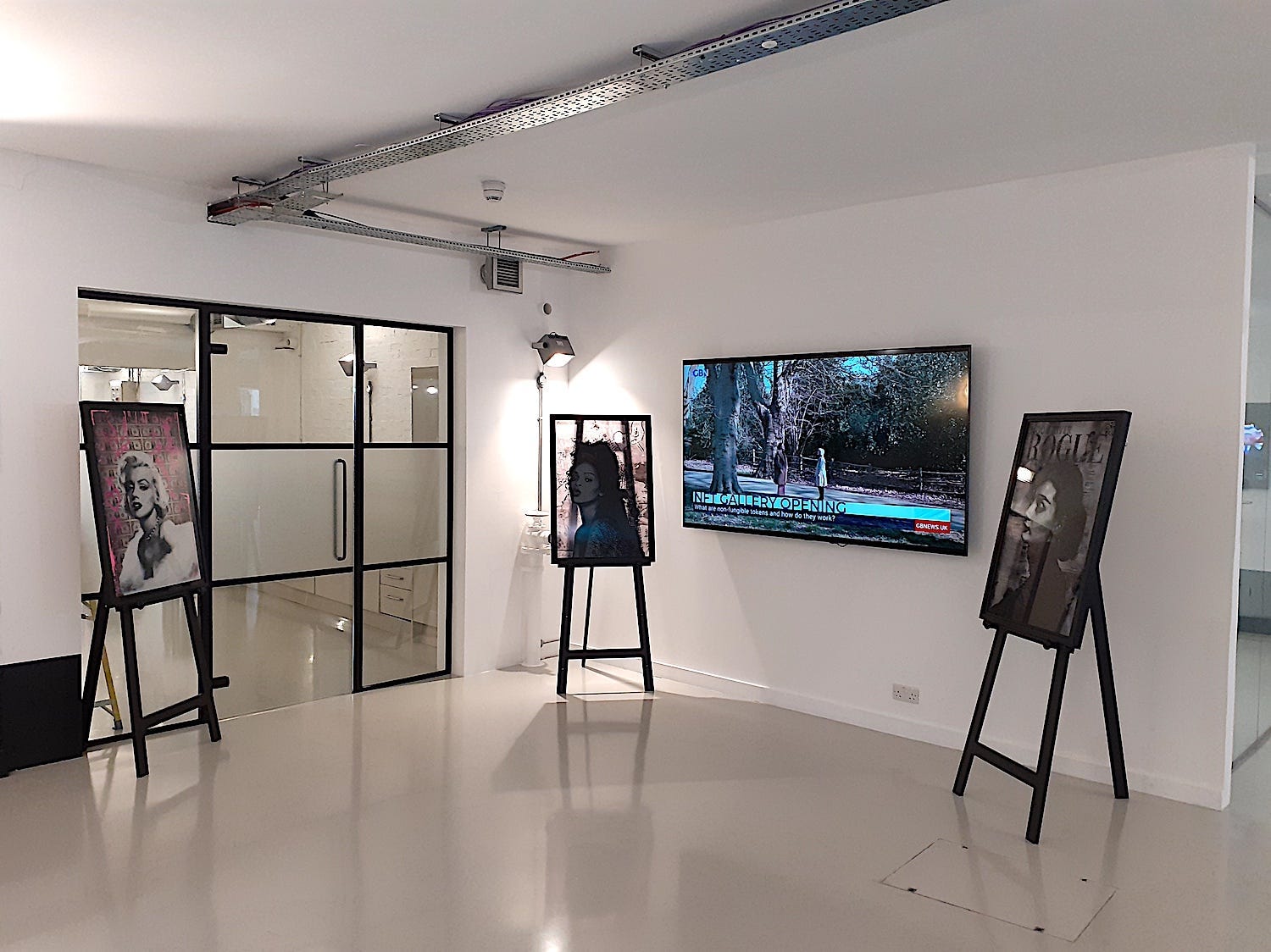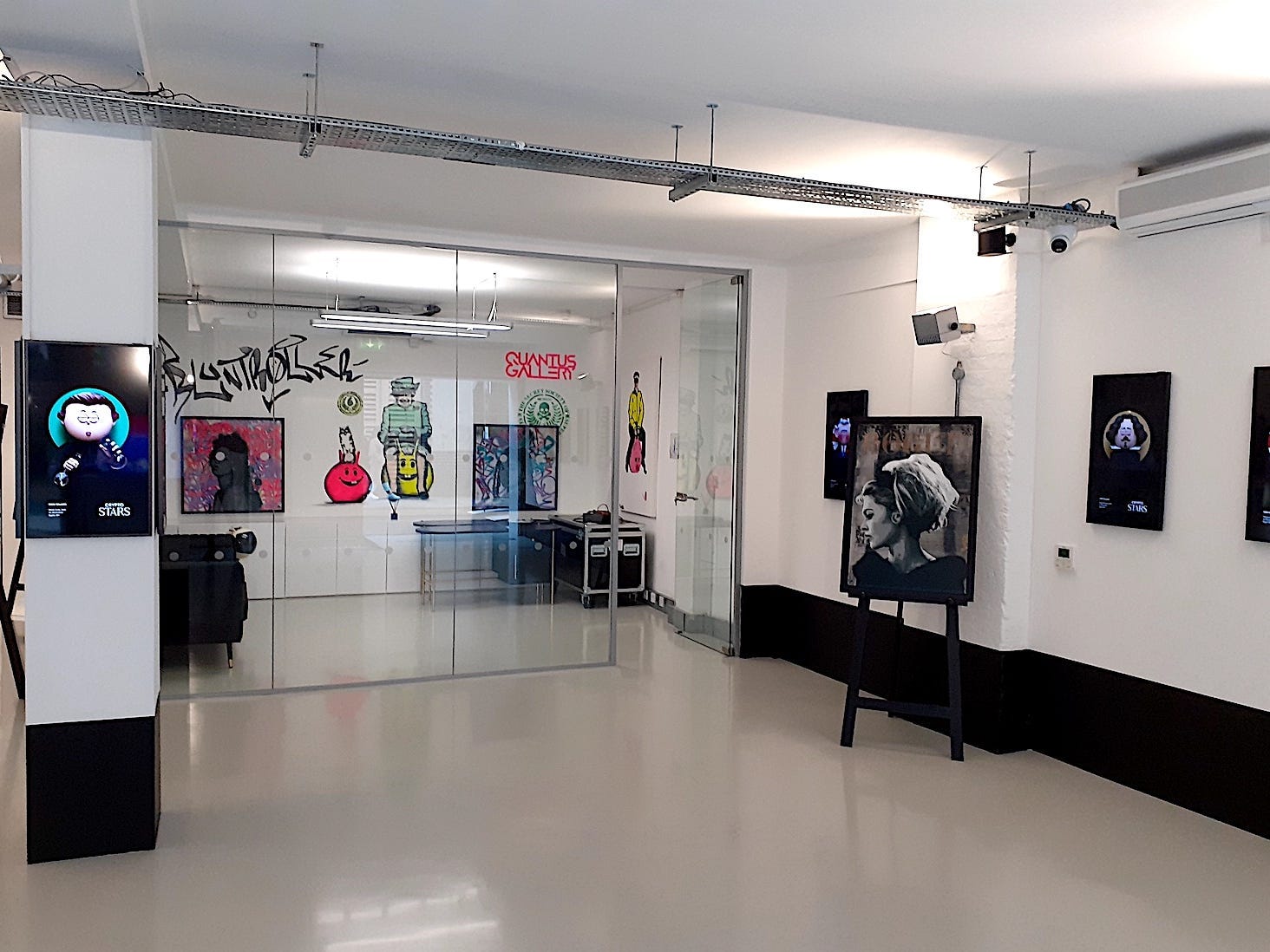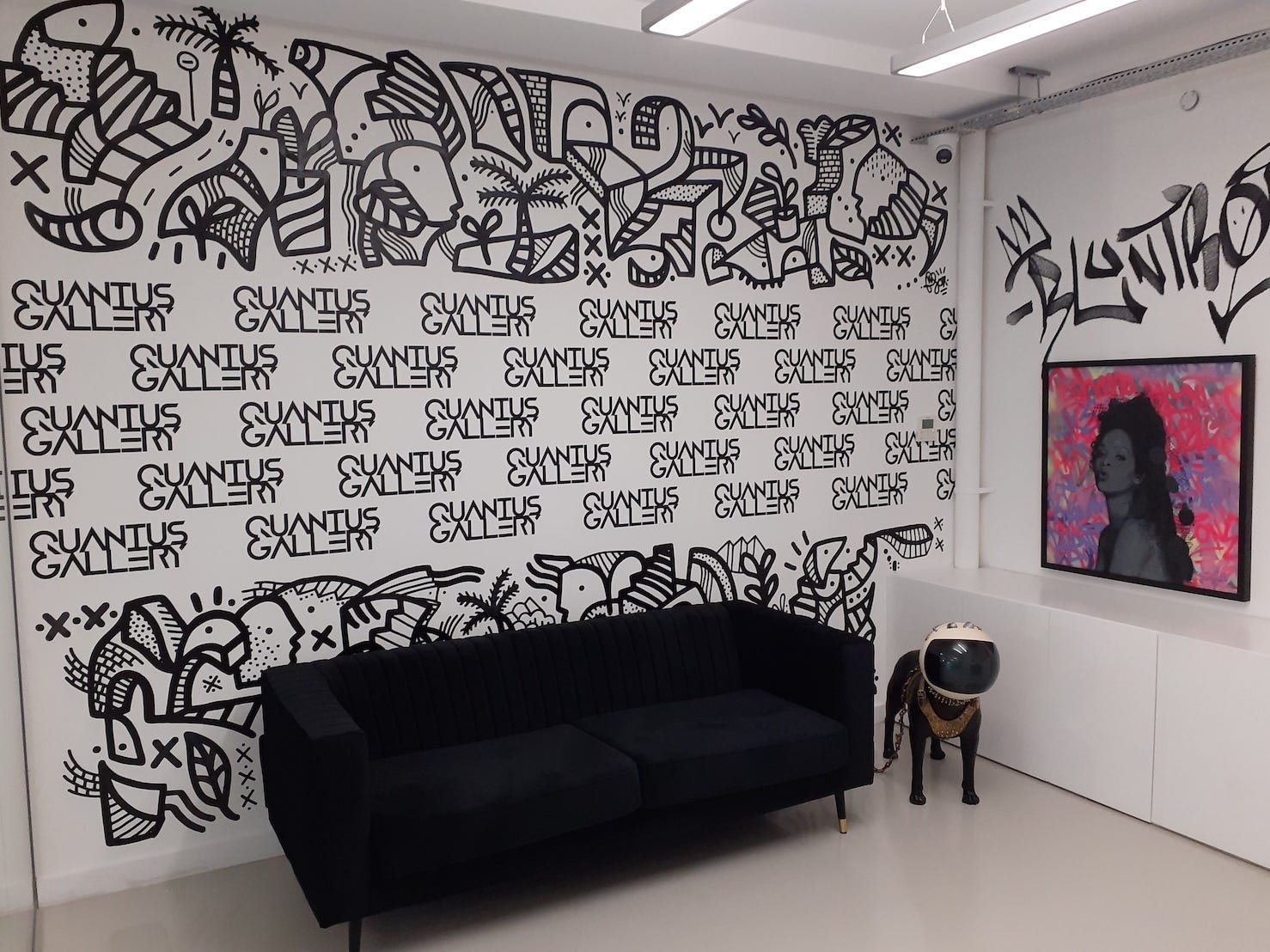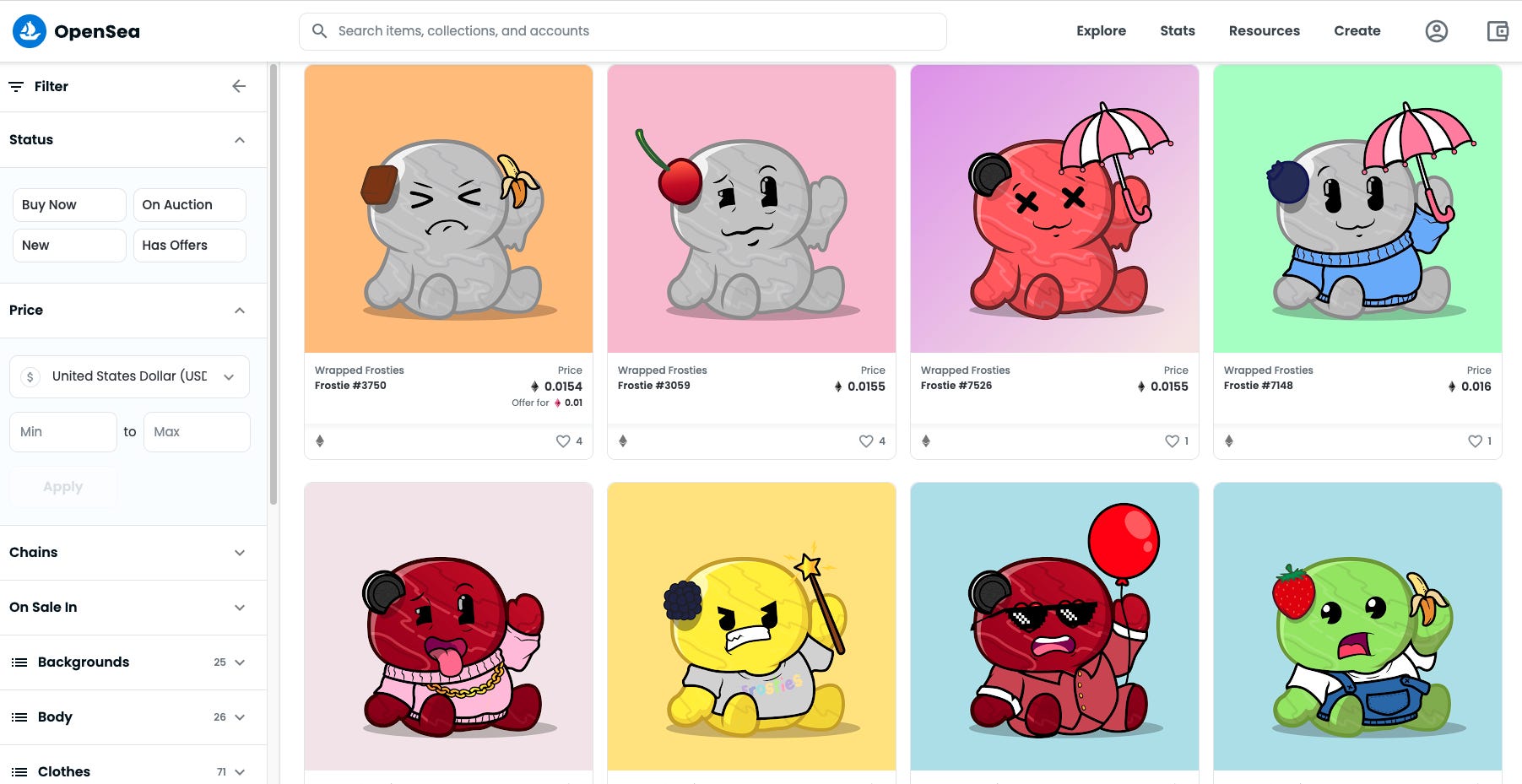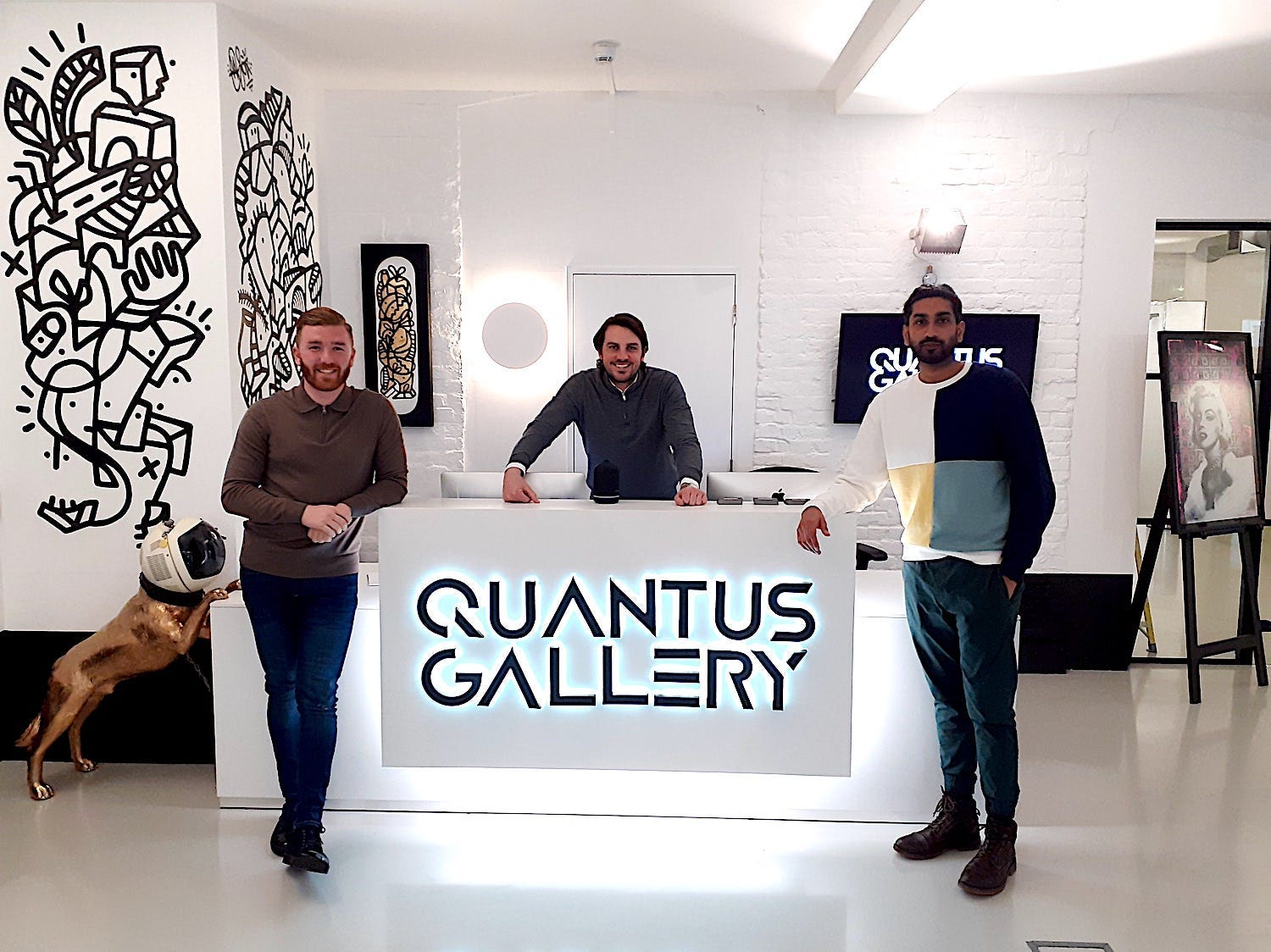Stephen Jones / Insider
- Quantus Gallery is London's first permanent NFT art gallery. Insider took a tour.
- NFTs are displayed on 36 TVs, alongside dog sculptures and physical pieces of art.
- It has six in-house advisors to educate visitors about how to make, buy, and sell NFTs.
The idea of a physical art gallery that is dedicated to selling digital artworks seems slightly paradoxical.
But Josh Sandhu, James Ryan, and Ryan Marsh say it's the next logical step of a global market that surged to $41 billion in 2021, which is why they've opened what is London's first permanent NFT art gallery, Quantus Gallery.
An NFT — or non-fungible token — is a digital asset built onto a blockchain. It essentially provides a unique record of ownership. Many consider them to be modern-day collectibles.
Some consider NFTs as the future of art and highlight the fact that established art auction houses Christie's and Sotheby's are already in on the trend. Skeptics say it's a volatile asset and any popularity is merely a bubble.
Quantus' three co-founders have backgrounds in graphic design, art galleries, and finance respectively. They said they want to appeal to the "95% of people" who don't yet fully understand the asset. Opening a physical gallery offers something different, and gives more people a way into the market, they add.
Intrigued, curious and slightly skeptical, Insider went along to see what it's like.

